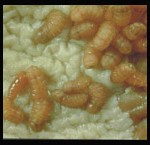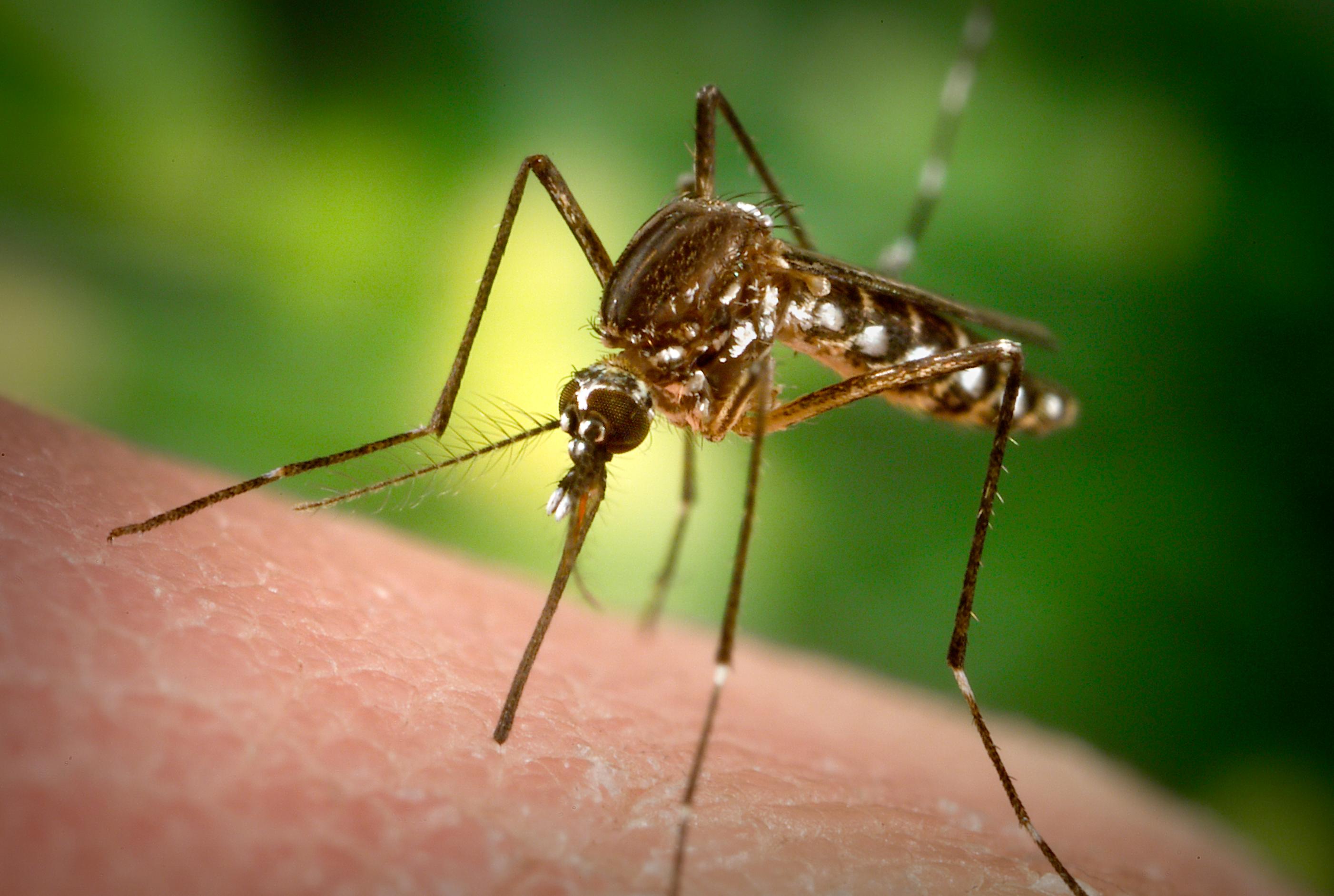Description:
Adult bot flies are bee-like in appearance and have rudimentary to no functioning mouthparts.
Bot fly behavior and development differ from obligatory myiasis typical of screwworm flies. Bot fly adults do not feed or take in nutrients and they show a high degree of host specificity. Only a small group of hosts are parasitized. The site of invasion by the newly emerged bot fly larvae will not be the site of development.
Bot fly larvae generally cause little injury to their hosts at low population levels and they do not intend to kill their host. If the host dies, so do the bot fly larva.
There are six important species of bot flies that affect the livestock industry in the US; Hypoderma bovis, H. lineatum, Oestrus ovis, and Gasterophilus intestinalis. The Hypoderma spp. are referred to as Cattle Grubs (discussed on their own), Oestrus ovis is the sheep nose bot and the Gasterophilus intestinalis attack horses.
Sheep nose bot, Oestrus ovis, are widely distributed and economically impacting. They parasitize both domestic and wild sheep and goats by the female squirting newly emerge larva directly in to the muzzle or eye. The larvae will then crawl down the throat to the branches of the lungs for early stages of development. Then the larvae return to the nasal sinuses or pharyngeal region of the host, where development is completed. Mature larvae are sneezed from the nostrils causing temporary discomfort.
Common horse stomach bot fly, Gasterophilus intestinalis, is distributed worldwide and is the predominant species in North America attacking horses. The female lays her eggs on the lower forelegs of horses. It is not uncommon for horses to have a load of stomach bots at some point in their lifetime. The larvae enter through the mouth after being licked from the forelegs during grooming. The larvae then attach to the gastrointestinal mucosa, which causes inflammation, sloughing of tissues and ulcerations. Sometimes the larvae remain in the mouth; they will burrow into the mouth lining, tongue or gums which lead to pus pockets, loose teeth and appetite loss.
Animals Attacked:
Cattle, horses, donkeys, sheep, goats, and reindeer
Veterinary Impact:
They are important to the livestock industry due to the economic loses that are endured each year.
Sheep nose bot: abundance of maggots can lead to respiratory complications and secondary fly attacks. The host will stop grazing and continually push their muzzles into bushes or grass clumps. Sometimes larvae get lodged in the nasal sinuses and this can cause the host to die.
Common horse stomach bot fly: chronic and repeated infestations can result in loosened teeth and ulceration of the gastric lining, which will eventually interfere with foraging ingestion and digestion. A typical horse can tolerate 100 or so larvae without any apparent side effects. The economic loss is variable based on the value of the individual horse. Damage can occur to some breeds (Thoroughbreds, America Saddle horses and Arabians) due to their evasive action to the flies that leads to self-injury. Reduced weight gain is possible as is death in extreme infestations.
Control:
Sheep nose bots: organophosphates and avermectin insecticides are effective against the larvae. Unless the infestation is numerous, the value gained by handling sheep and administering controls is questionable.
Common horse stomach bot fly: the use of insecticides will help reduce the number of larvae present. Be sure to read the label carefully before administering any chemical to or on horses.





